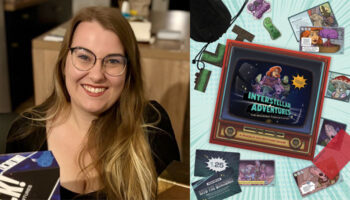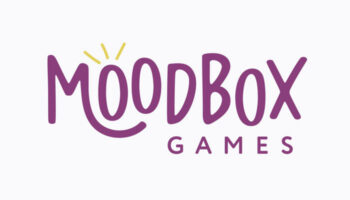Kate Gibson and Sam Goodburn discuss the vital work of The Diversity and Inclusion Team at Gibsons

Kate and Sam, thank you both for joining us. For those that don’t know, who are you, and what – day to day – do you do at Gibsons?
Sam: Hi Deej, thanks for having us! I’m Sam and I’m the Marketing Manager. I manage everything from the marketing strategy and product launches, to email campaigns, social-media content and strategy. It’s an all-encompassing role – and I love that no day is the same.
Kate: And I’m Kate, Managing Director. I guess you could say I’m Head of Strategy and Business Development… But most importantly, I’m Chief People Officer – without our great team we’d be nothing. It’s my responsibility to ensure Gibsons is a great place to work and that we minimise our impact on the planet and operate a responsible business.
Well, that’s something that very much comes across at Gibsons… Your values aren’t just there for show. So! We could discuss a thousand things here. The topic in front of us, though, regards a relatively new Gibsons project: The Diversity and Inclusion Team. What’s the catalyst for forming that?
Sam: The D&I Team was officially formed in June 2020, following the murder of George Floyd and the worldwide focus on the Black Lives Matter movement. However, it was back in 2017 when the Product Development Team and I began to make a concerted effort to ensure our products are more inclusive.

What kind of things were on your mind?
Sam: The majority of our puzzle artists were UK-based, white, cis-gender men, and the models in our photography were predominately white. So, we began to work with models of colour and commission new artists: female artists, artists of colour, artists who were part of the LGBTQI+ community; disabled artists and artists from an array of different countries and cultures around the world. This is something we’re keen to improve on and build every year. We’re actively on the hunt to give new artists a platform to showcase their work in the world of puzzles.
And in terms of the team’s mission, then, what’s the remit? What are you looking to achieve?
Sam: This is a hard question to answer as we don’t have one main goal. At the forefront, we want to ensure that Gibsons cultivates a culture of inclusivity, diversity and are always adapting and learning. We may be a small business, but we’re conscious that we have a big voice with a big community following… So it’s our responsibility to ensure our products and procedures represent the world we live in.
More specifically, Gibsons has internal and external focuses. Internally, our mission is to educate and encourage our team to be advocates by hiring speakers and running workshops on anti-racism and unconscious bias, LGBTQI+ issues and disability awareness for example…

And the external?
Sam: Our external efforts are product and process focused. We work closely with the Product Development Team to ensure our products are inclusive and accessible to all. We choose to work with businesses that are passionate about these issues, and are also doing the work to make the world a better place.
Kate: Essentially, we want to do better. We accept we must learn and educate ourselves, and we approach it from this mindset. It’s my responsibility to ensure that the great work our D&I Team are doing is reflected across the business – for example, in recruitment.
Of which, was that a team you could easily pull together from within your existing staff? How many of you are there?
Sam: There are ten of us, and we’re all part of the Gibsons team. We wanted to ensure the group included staff from different departments so that every part of the company was involved. There’s a varied mix of different backgrounds, ages and genders, all bringing unique viewpoints and life experiences to the group.
As a company, Gibsons is over a hundred years old. Pure common sense suggests that the company’s put out some things in that time that you wouldn’t put out now! But for the sake of context, what more recent products have the team been reviewing?
Kate: Indeed, times have changed, thankfully, and we have an opportunity to learn from the past and make sure things are better.

Sam: One of the first tasks for the D&I Team was to review all our products. In doing so, we found that many of our games’ rules were pretty archaic. The games that were invented in the 70s and 80s referred to players as ‘he’ and ‘him’, so we updated these and changed the pronouns to ‘they’, to ensure inclusivity.
Good example… And what kind of changes have you made to your jigsaws?
Sam: We were already working to ensure our jigsaw artwork and artists were more diverse, but some of the existing artwork could’ve been viewed as problematic… Particularly some of our comic jigsaws which are extremely popular, and have been for many years. There are some jokes, though, that portray women negatively.
Okay… So this is a range that one might describe as having – well, what? I guess some would say they have saucy, seaside humour…
Sam: Maybe, yes… The style is very tongue-in-cheek, and filled with raunchy humour that sometimes shows women scantily clad, and as the butt of the joke. As one of our key business values is to champion women, it was important for us to make changes to the artwork to ensure the humour is cheeky rather than lewd. It was also important, of course, to keep the style and comedy value that the fans know and love. It’s an ongoing process – we haven’t finished the work yet, but we made a good start.

Cheeky rather than lewd; interesting… Okay: long question: Given the dynamic and the remit, I think people are mostly going to have one of two attitudes as they read this… Some will think this is a valuable part of any modern product-development process. Others – more cynically – might see this as needlessly pandering to the too-delicate sensibilities of the age… Personally, I see those positions as part of the same spectrum: what’s cheeky? What’s lewd? So how do you see it?
Kate: Surely this depends on individual perspective – and the essence of this is to consider not just our own. If improving the diversity of our products makes just a few people feel more accepted and heard, then we’ve made a difference. Making these important changes absolutely shouldn’t remove the fun, it should enhance it for a wider audience.
Great answer!
Sam: Yes, I agree with Kate. Our goal is to simply ensure that our products are fun and can be enjoyed by all. Games and puzzles are hobbies that provide an escape from this crazy world we live in. They provide joy and bring people together. Representation helps people feel seen, heard and appreciated – and essentially that’s all we’re aiming to do.
Great. And purely in practical terms, how does it work? Looking at the questions in your first-ever party game Out of Order, for example… If one person says, “This question could be offensive – we should take it out!” and someone else says, “Almost anything could be seen as offensive… Leave it in!”, what’s the process? And ultimately, what would resolve that?
Sam: The process is pretty simple: during the development stages, a member of the team will review the product and flag any concerns with the development team and D&I group. They, in turn, review the concerns. Of course, everything is subjective – what offends one person won’t offend another – but this is why our D&I Team is made up of people of all ages and backgrounds who have different life experiences.

It’s a proper group discussion?
Sam: Very much so. We take a collaborative approach with the final decision, and decide – as a group – if something needs to be changed. The D&I Team is an important and valuable part of the ongoing New Product Development process. It shows the new product in a fresh light, revealing how it will be viewed by our customers.
In terms of the values you hold at Gibsons, then, are they something that have been formally established? Have you done a values-defining exercise? Or is it more intuitive; a case-by-case basis?
Kate: We redefined our values in 2020, and created them – as a team – alongside our team charter. As you implied earlier, we believe in living our values every day, through our interactions with each other and all of our partners and customers. One of the values is commitment, and this very much relates to learning from what’s gone before – and persisting until we find the right solution or a better way to do something.
And that being the case, how persuasive is the argument we touched on just now – that offence can only ever be taken, not given?
Kate: Such a thought-provoking question, and so complex! Indeed, to some extent we can choose to take offence even if none was intended, but that’s too simplistic… It ignores our individual experiences and expectations of fairness; our own set of values if you like. It would be wrong of us to dismiss the possibility that we can cause offence as we would be dismissing the breadth or experience and the individuality of our customers. So in a sense, we have a duty to endeavour to put ourselves in the shoes of others as best we can and look further than our own views.

Brilliant answer. So much so, actually, that it means the next question has the potential to sound awkward – so I’ll say it directly… Some of the proposed changes we discussed while developing Out of Order felt overly cautious to me. As inventors wanting to push back, were we expressing our interests to you in the best way? What did we do right when communicating with the team? What did we do wrong?
Sam: You definitely didn’t do anything wrong! Out of Order was a tricky project for a number of reasons, not least in that it was developed during the height of the pandemic. That meant a lot of communication was done by email and Zoom, two platforms that notoriously stifle creativity.
This is true! We had quite the merry time on Zoom…
Sam: That being said, I don’t remember the reasoning for the bulk of the changes being because we were concerned they’d cause offence. Many of the changes were to ensure the game could be enjoyed by the primary target audience of Gen Z and Millennials.
Can you give me an example of that?
Many of the questions referred to pop-culture events from the 80s, which alienated some of the members of the D&I Team. There were also a lot of references to Bible stories, which people of different religions or no religion found hard to answer. It wasn’t a case of removing every question that referenced one of these topics but balancing the content out so that there was something for everyone.

Got it. More generally, then, what can other inventors do – around potentially divisive subjects – to help diversity teams achieve their goals?
Sam: The most important thing is to work with a company whose brand and target audience align with your own. If you invented a children’s game, you wouldn’t necessarily pitch it to the company who makes Cards Against Humanity as their customer base doesn’t align with your target audience.
In addition, inventors need to be open to changes and understand that the games company are licensing your game and need to make a profit. For example, retailers like Waterstones and John Lewis are key accounts for us, so we need to ensure games are in line with their brands as well as our own… That was another reason for some of the changes in Out of Order.
And for other companies that would like to follow your lead, what advice would you give?
Sam: I think the most important part of developing a game is the testing process. I’d advise others to make sure it’s not just played with your internal team but a wide range of different audiences to ensure inclusivity. More generally, I’d say that the introduction of the D&I Team at Gibsons has been a really positive step in assessing, reviewing and improving our company and the products we make. We appreciate there’s so much more work to be done, and will continue to learn, but the first step is acknowledging the need for change and championing that every day.

And Kate?
Kate: It’s important for leadership teams to be fully supportive and engaged in the strategy to really make a difference across a business, and to genuinely understand the need for change.
In that respect, then, what’s the biggest challenge your own team faces as it continues to find its feet and move forward?
Sam: A particular challenge of ours is balancing inclusivity and representation in nostalgic puzzle images. Our collection of contemporary jigsaw puzzles are designed by artists of all backgrounds, but our traditional puzzles have been predominately painted by white men, mostly due to the traditional art style and nostalgic historical settings.
Hmmm. How would you address that?
We’ve raised it with our agency partners and reached out to new artists. We’re starting to see some change, but there’s still much more to do. We’d love to hear from artists who’d be interested in painting puzzle images for our traditional range; artists who might not have considered it before.
And to do that, what’s the best way to reach you?
Contact our Product Development Team using [email protected] – that’s the best place to start.
Okay. I hope you’ll come back and let us know how you get on with that. In the meanwhile, what’s the one question I should’ve asked but didn’t?
Sam: I’d like to raise awareness surrounding the lack of diversity in the toy industry.

Go on…
When I joined Gibsons in 2013, and attended the London Toy Fair for the first time, I noticed that the exhibitors were predominately middle-aged white men. Since then, I’ve seen the industry change and so many more women have taken up higher positions… For example Kate and Nicki Gumbrell, our Managing Director and Sales Director, took up their positions in 2016. This is a step in the right direction – but we still have a long way to go.
Kate: I agree, I’d like to see the toy industry continue to strive towards being a more inclusive place so that people with disabilities, people of colour and queer people feel welcomed and want to join this amazing industry. At Gibsons, we offer an internship scheme where we provide work experience to young people. We’ re also part of the government’s Kick Start scheme, which allows employees to move into sustained employment. We still have a lot to learn and would love to hear from others within the toys and games industry who are raising similar questions within their team.
And if people want to reach out to you on that front…
Kate: If you’re interested in sharing your experience, please do get in touch with us through [email protected].
Brilliant. Thank you very much Kate and Sam; your valuable time is greatly appreciated.
—
To stay in the loop with the latest news, interviews and features from the world of toy and game design, sign up to our weekly newsletter here




















